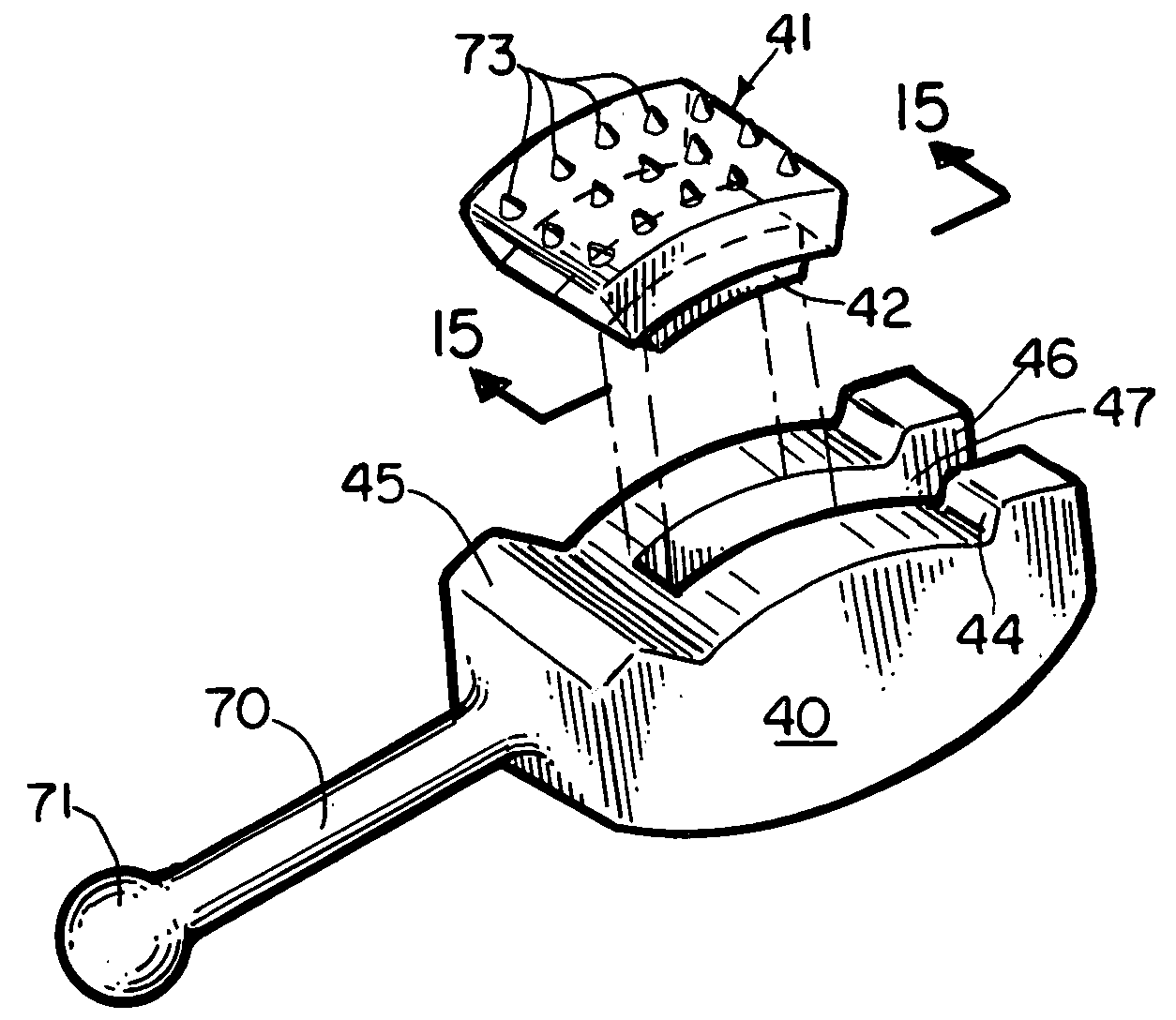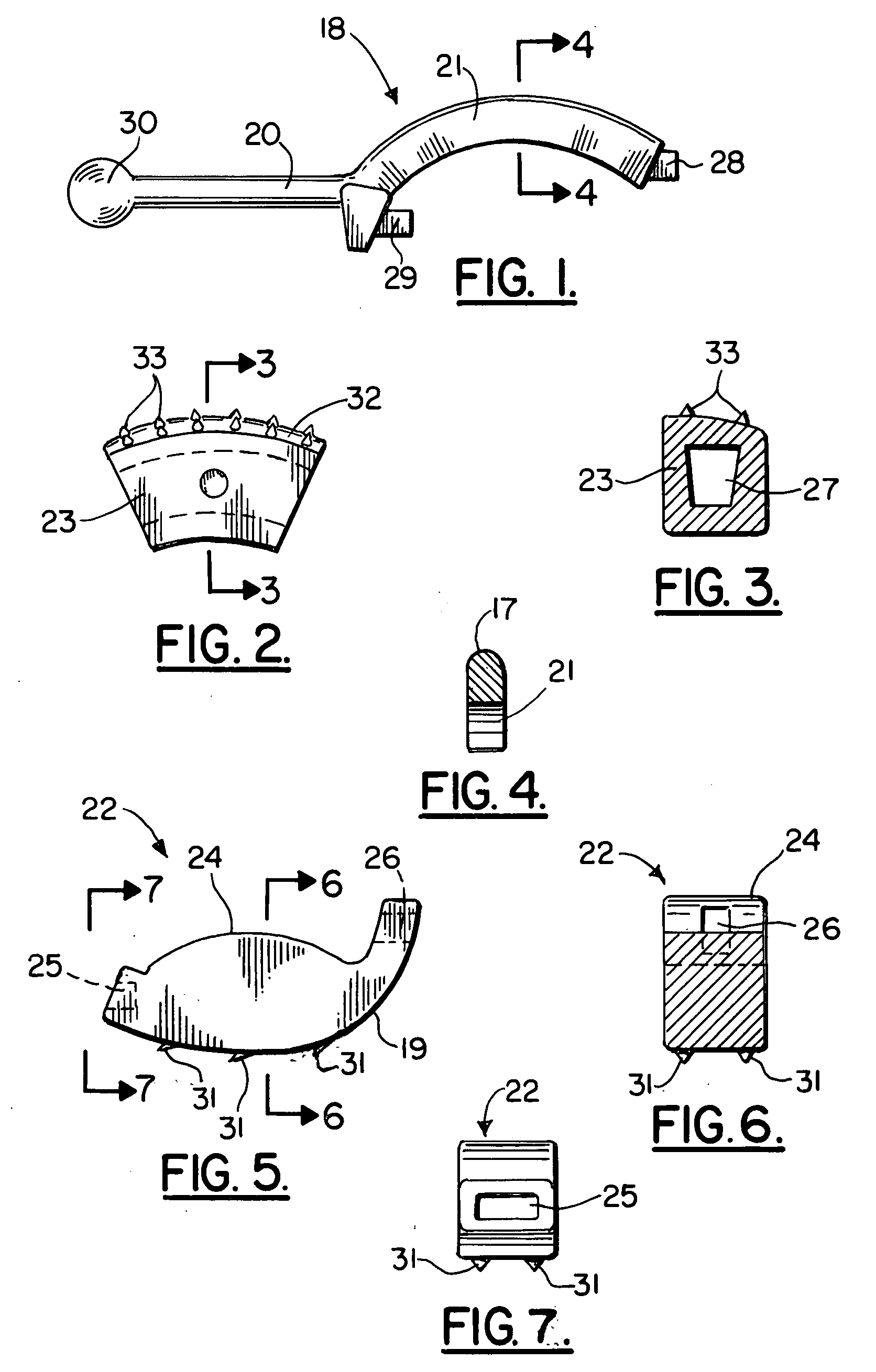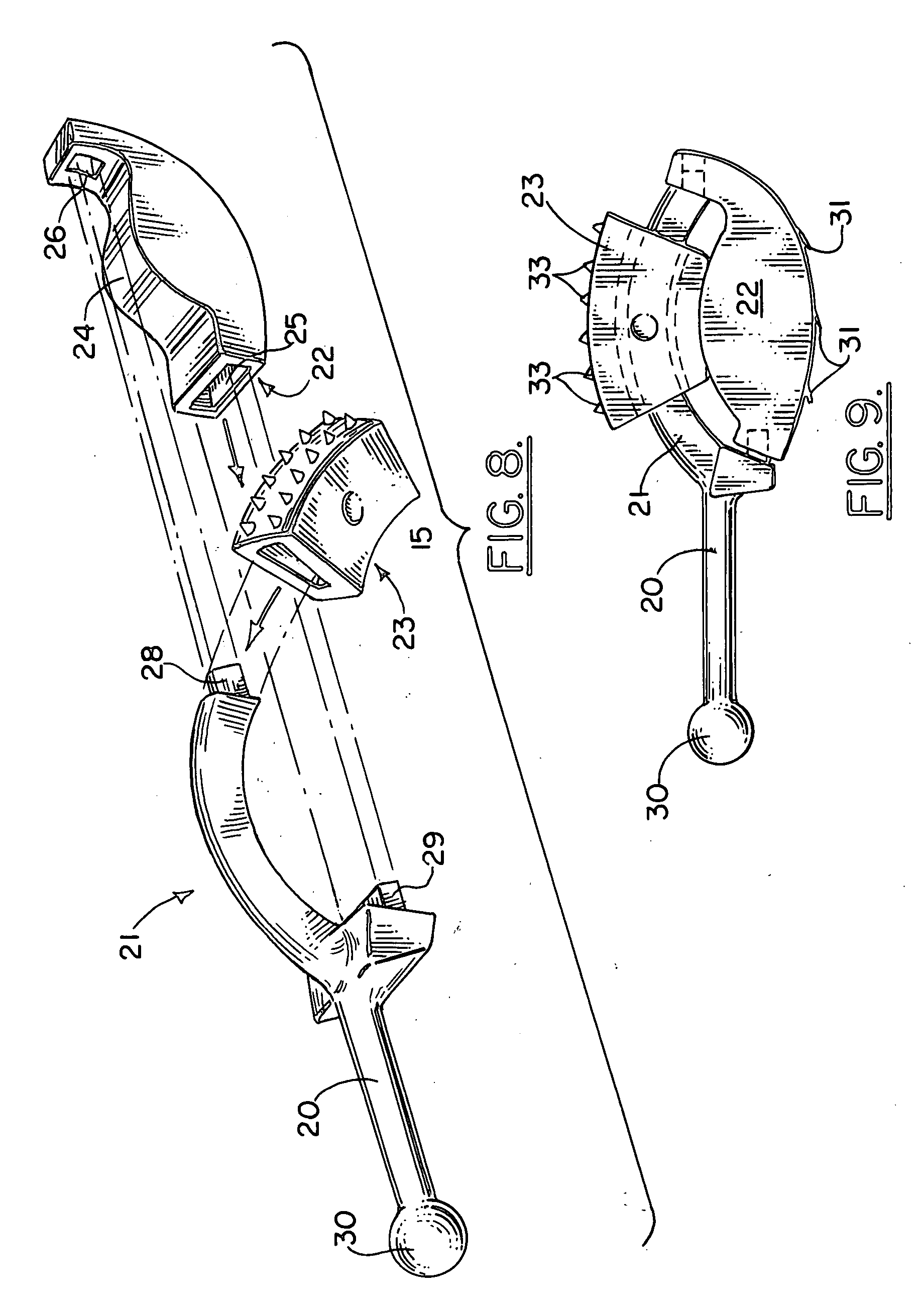Lumbar disc replacement implant for posterior implantation with dynamic spinal stabilization device and method
a dynamic spinal stabilization and disc replacement technology, applied in the field of disc replacement apparatus of the lumbar spine, can solve the problems of painful degeneration of the joints of the spinal motion segment, affecting the stability of the spinal disc, and affecting the quality of life of the patient, so as to reduce the accumulation of friction and metal wear particles, reduce the effect of interlocking bullets and resist shortening
- Summary
- Abstract
- Description
- Claims
- Application Information
AI Technical Summary
Benefits of technology
Problems solved by technology
Method used
Image
Examples
Embodiment Construction
[0135]Certain exemplary embodiments are described to provide an overall understanding of the principles of the structure, function, manufacture, and use of the devices and methods disclosed herein. One or more examples of these embodiments are illustrated in the accompanying drawings. Those skilled in the art will understand that the devices and methods specifically described herein and illustrated in the accompanying drawings are non-limiting exemplary embodiments and that the scope of the present invention is defined solely by the claims. The features illustrated or described in connection with one exemplary embodiment may be combined with the features of other embodiments. Such modifications and variations are intended to be included within the scope of the present invention.
[0136]The implant is presented in several exemplary but non limiting embodiments. The first embodiment is identified as the anchor rail design. It is comprised of 3 separate components, which fit together in ...
PUM
 Login to View More
Login to View More Abstract
Description
Claims
Application Information
 Login to View More
Login to View More - R&D
- Intellectual Property
- Life Sciences
- Materials
- Tech Scout
- Unparalleled Data Quality
- Higher Quality Content
- 60% Fewer Hallucinations
Browse by: Latest US Patents, China's latest patents, Technical Efficacy Thesaurus, Application Domain, Technology Topic, Popular Technical Reports.
© 2025 PatSnap. All rights reserved.Legal|Privacy policy|Modern Slavery Act Transparency Statement|Sitemap|About US| Contact US: help@patsnap.com



